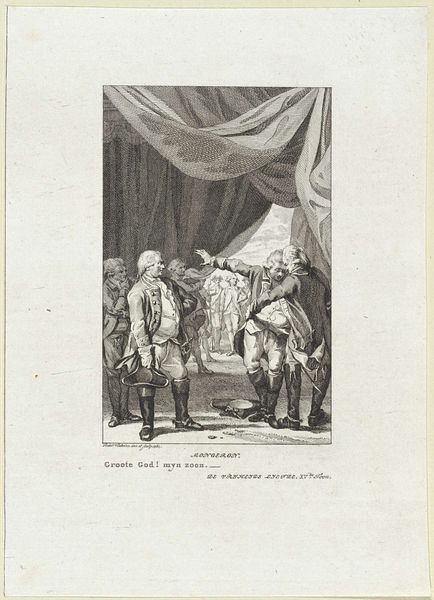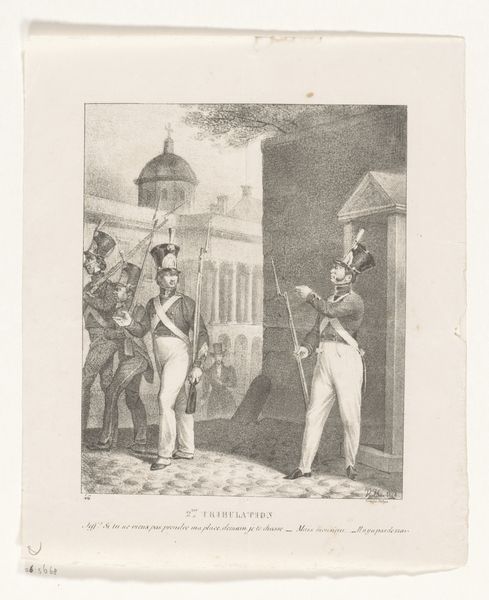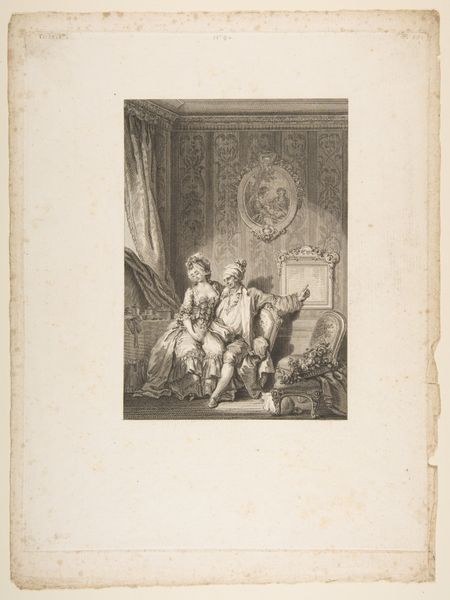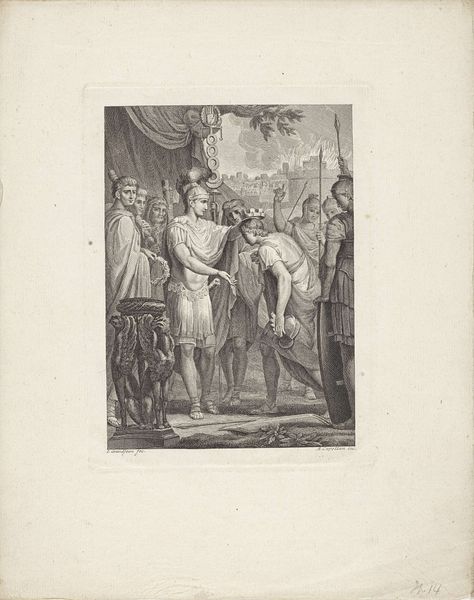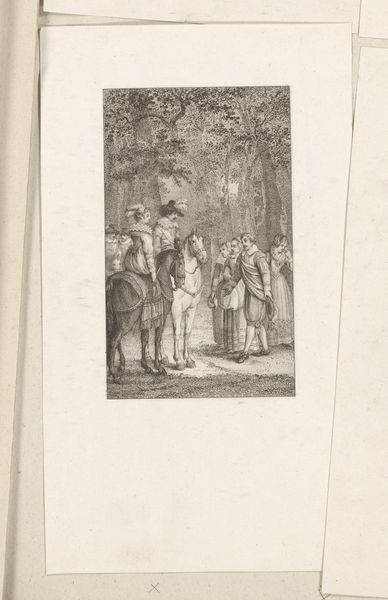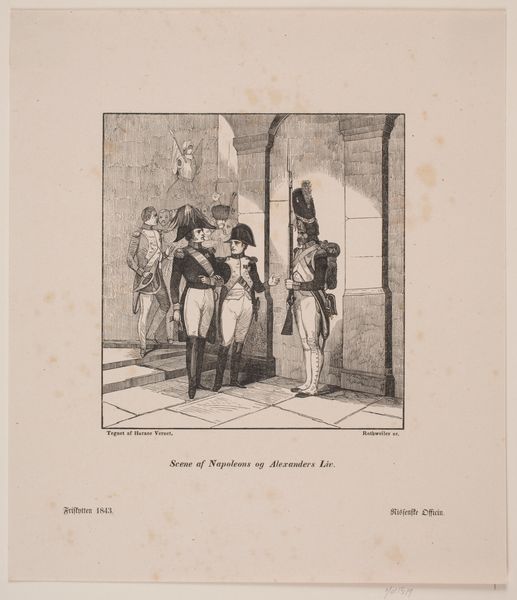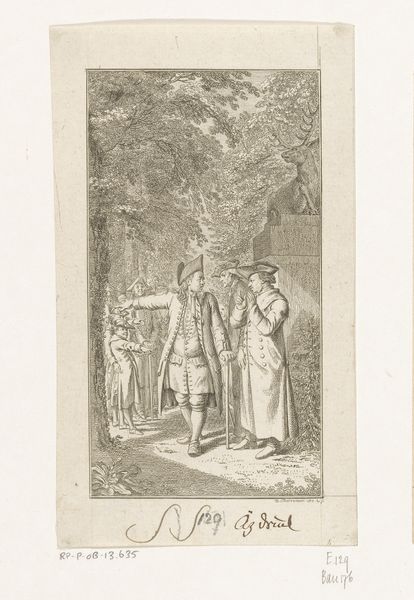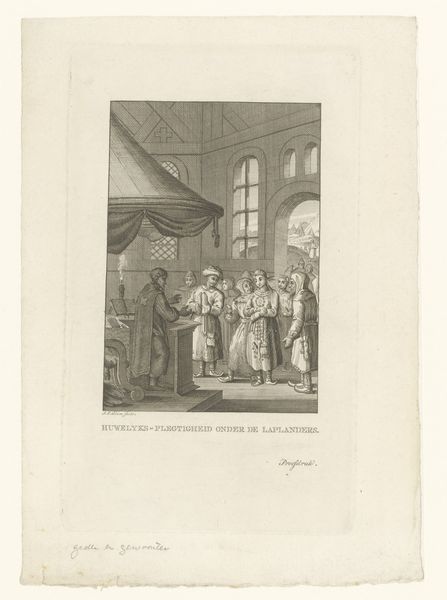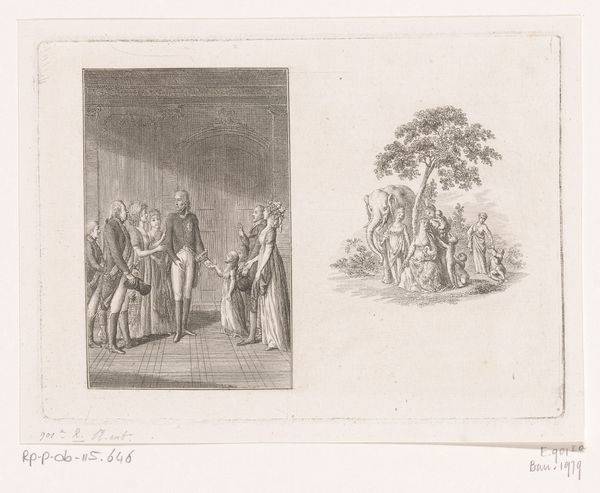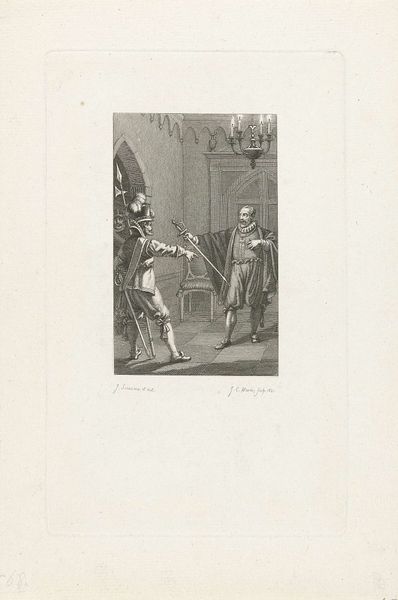
drawing, print, paper, ink, engraving
#
portrait
#
drawing
#
neoclacissism
#
light pencil work
#
ink paper printed
# print
#
paper
#
ink
#
history-painting
#
engraving
Dimensions: height 250 mm, width 150 mm
Copyright: Rijks Museum: Open Domain
Editor: So, this is Reinier Vinkeles' print, "Reinoud Jan van Golstein en prins Frederik," created between 1809 and 1810. It’s ink on paper, a delicate engraving. I'm struck by the formal nature of the interaction depicted and the way the scene seems to play out on a very constructed stage. What do you make of this piece? Curator: Indeed. It’s fascinating to view this seemingly straightforward depiction through a critical lens. Consider the period, the early 19th century: a time of immense social and political upheaval in Europe. How does this neatly arranged image serve or subvert the power structures of its time? Editor: That's interesting. It feels like propaganda almost, even though it's quite subtle. I guess I hadn’t considered that a drawing, or in this case a print, could be so actively engaged in shaping public opinion. Curator: Exactly! The print participates in creating an idealized vision. What narrative is being constructed here, and whose interests does that narrative serve? Think about who had access to images like these, and what messages they were meant to reinforce. Consider gender too. Who holds power in this image? And who is relegated to the background, or even absent entirely? Editor: It really makes you question what's being left out, doesn’t it? I am used to thinking about painting being political, but never before about prints. Now that I am seeing this print from this perspective, the message becomes a lot clearer. Curator: Precisely. Engaging with the social and historical contexts allows us to unravel the hidden power dynamics within even seemingly simple artworks. It highlights the vital role art plays in shaping our understanding of the past, and ourselves in the present.
Comments
No comments
Be the first to comment and join the conversation on the ultimate creative platform.
